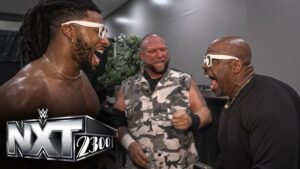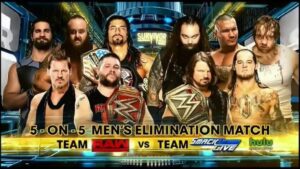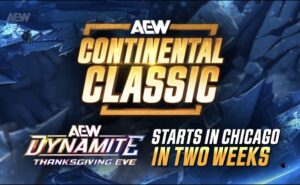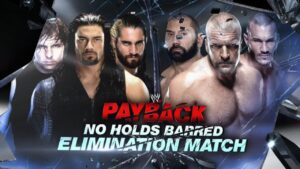A Brief History of WWE at Madison Square Garden
WWE returns to Madison Square Garden for the first time in two years on Friday, September 10, 2021. The show, being called Friday Night Super SmackDown, will feature stars from both Smackdown and Raw, and is expected to be the final match of John Cena’s current WWE run before returning to Hollywood.
WWE has a long history with “The World’s Most Famous Arena,” which served as the company’s spiritual home for decades. But like any relationship WWE enters into, there have been a few bumps along the way. Here’s a brief history of WWE in Madison Square Garden: the good, the bad, and the ugly:
WWE exists in part because of Madison Square Garden
Before WWE became “an integrated media organization and recognized leader in global entertainment,” it was a mere wrestling promotion based out of the US Northeast. Originally called the Capitol Wrestling Corporation, the territory was part of the National Wrestling Alliance (NWA) syndicate. Run by Vince McMahon Sr. and his business partner, Toots Mondt, the CWC ran shows at the Garden that were regularly headlined by NWA World Heavyweight Champion, “Nature Boy” Buddy Rogers, whose flashy style was a huge draw at the Garden. When the NWA decided to take the title off Rogers and put it on Lou Thesz, McMahon and Mondt, feeling that Thesz wouldn’t be a draw in the Northeast, including their home base of Madison Square Garden, withdrew from the NWA in protest, and shortly thereafter formed the World Wide Wrestling Federation (WWWF), or what is now WWE, in early 1963.
Most title changes happened there in the early days
During those early days, the WWWF ran the Garden nearly every month, or in some cases twice a month, and nearly every World title change for the next 20 years happened there. Bruno Sammartino won both of his World Championships there, while Ivan Koloff, Pedro Morales, Bob Backlund, The Iron Sheik, and Hulk Hogan all won the title there as well. Once the WWF expanded nationally, it became more common for the belt to switch hands across North America, but Madison Square Garden remained important enough that a number of major title changes would continue to happen there. In the following years, Bret Hart, Diesel, Sid, The Big Show, CM Punk, Shawn Michaels, and Chris Benoit all won World titles at MSG.
The Birth of Hulkamania
When Vince McMahon Jr. bought the WWF from his father, he had a number of major changes in store. Unlike Vince Sr., who was more of a wrestling traditionalist and respected the NWA even if he didn’t always agree with it, Vince the younger was looking to completely take over the industry and remake it in his image. He planned to do it by producing a kid-friendly product and expanding nationally, but he needed the right star to do that, and he found that star in Hulk Hogan, who had gained national prominence thanks to his cameo in Rocky III. Hogan was quickly propelled to the top of the roster, and after beating The Iron Sheik in a short match, Hulkamania was born.
The idea that this groundbreaking moment could have happened anywhere other than Madison Square Garden was unthinkable at the time. The same way WWE will often crown “the man,” in the main event at WrestleMania today, in those pre-WrestleMania days, Madison Square Garden was the only place where the company could crown their new king.
MSG was the mecca for WWE PPVs
If Hulkamania launched the WWF, Pay-Per-View would put the company into orbit. And when McMahon decided to enter the PPV market, MSG was the only conceivable place where it could happen. McMahon gambled the future of the company on WrestleMania being a success, and if it had failed, he’d be out of business. But McMahon didn’t want the event to be a mere wrestling card: he wanted it to be a showbiz extravaganza, and that’s exactly what WrestleMania was, loaded up with celebrities like Mr. T, Muhammad Ali, and Liberace. Like Hulkamania, WrestleMania could only happen at the Garden because it was a friendly crowd in New York, and holding the event at “The World’s Most Famous Arena,” only added to the card’s luster.
The first WrestleMania was a major success, and helped formulate the model that would increasingly become the company’s bread and butter in the ensuing years. Since then, WWE has hosted a number of PPVs at MSG, including WrestleManias X and XX, three SummerSlams (including the first one in 1988), three Survivor Series’, two Royal Rumbles, and a number of Raw and Smackdown tapings.
WWE severs ties with MSG
In more recent years, WWE has distanced itself from MSG on the grounds that the rent and broadcast fee increase would make it difficult to make a profit there. In fact WWE’s last PPV at MSG was Survivor Series 2011. WWE continues to host PPVs and TV tapings in New York, but they’re more likely to be at the Barclays Center in Brooklyn or the MetLife Stadium in New Jersey, where WWE held WrestleManias 29 and 35 (although WWE did host the 2013 Hall of Fame induction at MSG, but allegedly only out of respect for Bruno Sammartino).
The Garden responded to this by ending their exclusivity agreement with WWE, and opening up their venue to non-WWE shows for the first time. 2019 saw the first-ever non-WWE show at MSG, the ROH-NJPW G1 Supercard. In what seemed like a panic move, WWE returned to “claim their spot” for a Raw and Smackdown taping at the Garden a few months later.
As WWE begins touring again, they’ve made a point of returning to the venue where they first made their name, Madison Square Garden. Now that MSG is no longer exclusive to WWE, there’s a feeling that a piece of WWE’s history has been lost. WWE will no doubt continue to have shows at the Garden, but the days of their partnership with a “The World’s Most Famous Arena,” appear to be over, at least for now.
More From LWOS Pro Wrestling
Stay tuned to the Last Word on Pro Wrestling for more on this and other stories from around the world of wrestling, as they develop. You can always count on LWOPW to be on top of the major news in the wrestling world, as well as to provide you with analysis, previews, videos, interviews, and editorials on the wrestling world. You can check out an almost unlimited array of WWE content on the WWE Network and Peacock.






